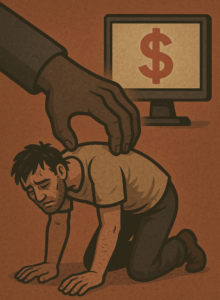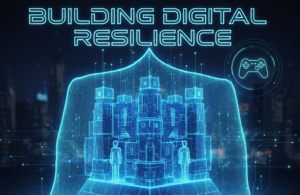The notification chimes softly on thirteen-year-old Alex’s phone: “Limited Time Offer! Get 1000 gems for just $4.99!” It’s the fourth such alert today from their favorite mobile game. What started as a free download six months ago has quietly drained $347 from their parent’s credit card through a series of “small” purchases. Alex isn’t alone, this scenario plays out in millions of households worldwide, illuminating a troubling intersection between psychology, technology, and commerce that lawmakers are finally beginning to address.
The Psychology Behind the Purchase
 Freemium games, those ostensibly free-to-play experiences that generate revenue through in-game purchases, have evolved far beyond simple entertainment. They’ve become sophisticated psychological manipulation engines designed to extract maximum spending from players, particularly vulnerable populations like children and adolescents. The mechanics are deceptively simple: create artificial scarcity, implement time-based progression walls, and offer immediate gratification through microtransactions.
Freemium games, those ostensibly free-to-play experiences that generate revenue through in-game purchases, have evolved far beyond simple entertainment. They’ve become sophisticated psychological manipulation engines designed to extract maximum spending from players, particularly vulnerable populations like children and adolescents. The mechanics are deceptively simple: create artificial scarcity, implement time-based progression walls, and offer immediate gratification through microtransactions.
These games employ what behavioral economists call “variable ratio reinforcement schedules”, the same psychological principle that makes slot machines so addictive. Players never know when their next reward will come, creating a powerful dopamine-driven loop that keeps them engaged and spending. Virtual currencies further obfuscate spending by creating psychological distance between real money and in-game purchases. When you’re buying “gems” or “coins” rather than spending dollars directly, the financial impact feels less immediate and tangible.
The industry has perfected the art of targeting what researchers call “whales”, players who spend disproportionately large amounts on in-game purchases. However, an increasingly concerning trend shows children and teenagers becoming inadvertent whales through accumulated small purchases that can total hundreds or thousands of dollars over time.
The Regulatory Response: A Global Awakening
 The tide is turning against predatory gaming practices, with legislators worldwide recognizing the need for protection. Recent developments signal a significant shift in how governments view the responsibility of game developers toward their youngest users.
The tide is turning against predatory gaming practices, with legislators worldwide recognizing the need for protection. Recent developments signal a significant shift in how governments view the responsibility of game developers toward their youngest users.
In March 2025, the European Union’s Consumer Protection Cooperation Network published comprehensive guidelines targeting deceptive practices in games marketed to children. The Commission is probing alleged unfair practices in the horse-riding game Star Stable Online, targeting in-game purchases aimed at children, while new guidelines should stop developers from disguising the price of microtransactions with virtual currency. This represents a fundamental challenge to the industry’s practice of using virtual currencies to obscure real-world costs.
The United States has seen parallel developments, with video game addiction lawsuit claims alleging Microsoft, Nintendo, and others intentionally created addictive games to boost profits, harming youth mental health. The Federal Trade Commission has also taken action, with Cognosphere agreeing to pay $20 million and to block children under 16 from making in-game purchases without parental consent to settle FTC allegations the company violated a children’s privacy law and deceived children and other users about the real costs of in-game transactions.
These regulatory actions represent more than financial penalties, they signal a fundamental shift in how society views the responsibility of technology companies toward vulnerable users.
The Human Cost of Digital Exploitation
 Behind the statistics and legal proceedings are real families grappling with the consequences of predatory gaming design. Consider the parents who discover their child has spent their college fund on virtual items, or the teenagers who develop anxiety and depression when separated from their games. These aren’t isolated incidents but predictable outcomes of systems designed to maximize engagement and spending above all other considerations.
Behind the statistics and legal proceedings are real families grappling with the consequences of predatory gaming design. Consider the parents who discover their child has spent their college fund on virtual items, or the teenagers who develop anxiety and depression when separated from their games. These aren’t isolated incidents but predictable outcomes of systems designed to maximize engagement and spending above all other considerations.
The psychological manipulation extends beyond mere spending. Many freemium games employ what researchers call “dark patterns”, user interface designs specifically crafted to trick users into unintended actions. These might include making cancellation buttons nearly invisible, defaulting to the most expensive purchase options, or creating fake urgency through countdown timers.
For developing minds, these manipulative techniques can be particularly harmful. Adolescent brains are still developing impulse control and risk assessment capabilities, making them especially vulnerable to exploitation. When combined with the social pressure to maintain status within gaming communities, often measured by possession of rare virtual items, the psychological pressure can become overwhelming.
Building Digital Resilience: A Framework for Responsible Gaming
Creating healthier relationships with freemium games requires a multi-layered approach involving individuals, families, and broader community support systems. Digital literacy must evolve beyond simply understanding how to use technology to encompass critical evaluation of the motivations behind digital experiences.
 Individual Awareness Strategies begin with recognizing the psychological techniques at play. Understanding concepts like artificial scarcity, social proof, and intermittent reinforcement can help players make more conscious decisions about their gaming experiences. Setting specific time and spending limits before beginning play sessions creates external boundaries that can override in-the-moment impulses.
Individual Awareness Strategies begin with recognizing the psychological techniques at play. Understanding concepts like artificial scarcity, social proof, and intermittent reinforcement can help players make more conscious decisions about their gaming experiences. Setting specific time and spending limits before beginning play sessions creates external boundaries that can override in-the-moment impulses.
Family Communication Frameworks prove essential for households with young gamers. This involves not just setting rules about screen time and spending, but engaging in ongoing conversations about the business models behind free games. Parents benefit from understanding that “free” games often generate more revenue per user than traditional premium games precisely because they’re designed to encourage ongoing spending.
Community and Educational Initiatives can help normalize discussions about healthy gaming habits. Schools might integrate digital media literacy into their curricula, teaching students to recognize and resist manipulative design patterns. Community organizations could offer workshops helping families navigate the complex landscape of modern gaming.
The Path Forward: Balancing Innovation with Protection
 The challenge facing regulators, developers, and society is finding approaches that protect vulnerable users without stifling legitimate innovation in gaming. Not all microtransactions are inherently predatory, many serve as ways for players to support developers of games they enjoy. The key lies in transparency, consent, and age-appropriate design.
The challenge facing regulators, developers, and society is finding approaches that protect vulnerable users without stifling legitimate innovation in gaming. Not all microtransactions are inherently predatory, many serve as ways for players to support developers of games they enjoy. The key lies in transparency, consent, and age-appropriate design.
Progressive developers are already experimenting with more ethical monetization models. Some games now offer subscription-based access that removes artificial progression barriers, while others provide clear, upfront pricing for content without psychological manipulation tactics. These approaches suggest that profitable gaming businesses can exist without exploiting vulnerable users.
The regulatory landscape will likely continue evolving, with potential developments including mandatory disclosure of odds for random rewards, cooling-off periods for purchases, and age verification systems that actually protect minors rather than merely shifting liability to parents.
A Call for Digital Citizenship
Ultimately, addressing the challenges of freemium gaming requires recognizing it as part of a broader conversation about digital citizenship in the 21st century. Just as we teach children about stranger danger and financial literacy, we must equip them with the tools to navigate digital environments designed to influence their behavior and spending.
 This isn’t about demonizing games or technology, but about fostering critical thinking skills that can help users of all ages make informed decisions about their digital lives. It’s about creating a culture where asking “Who benefits from this design?” becomes as natural as checking both ways before crossing the street.
This isn’t about demonizing games or technology, but about fostering critical thinking skills that can help users of all ages make informed decisions about their digital lives. It’s about creating a culture where asking “Who benefits from this design?” becomes as natural as checking both ways before crossing the street.
The freemium model represents a fascinating intersection of psychology, technology, and economics. By understanding these forces and advocating for responsible design practices, we can work toward a future where digital entertainment enriches rather than exploits the human experience. The conversation is just beginning, but the stakes, particularly for our youngest and most vulnerable users, couldn’t be higher.
As we navigate this digital landscape, the question isn’t whether technology will continue to evolve and influence our behavior. The question is whether we’ll develop the wisdom and systems necessary to ensure that evolution serves human flourishing rather than exploitation. The answer lies not just in regulation, but in our collective commitment to digital responsibility and the protection of those who need it most.


